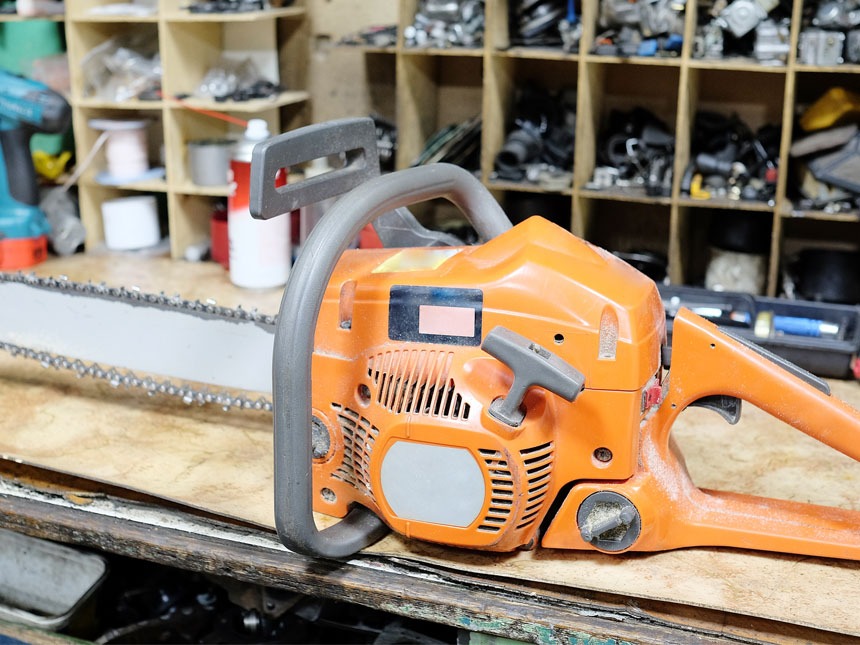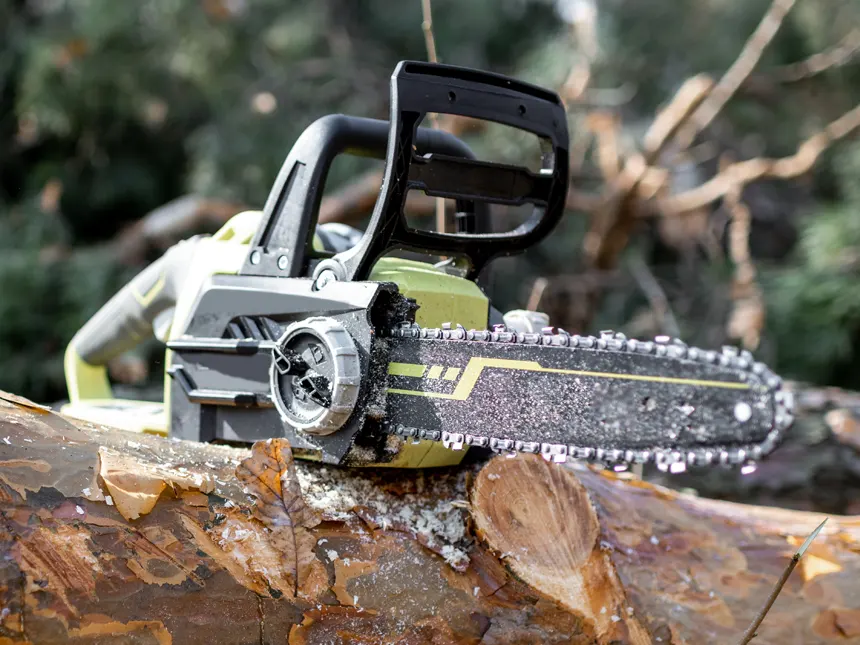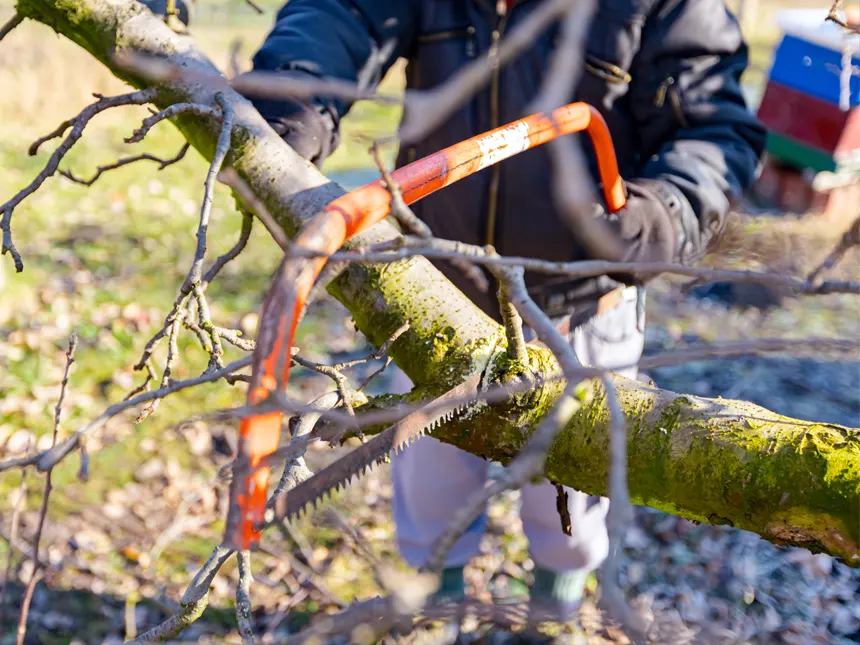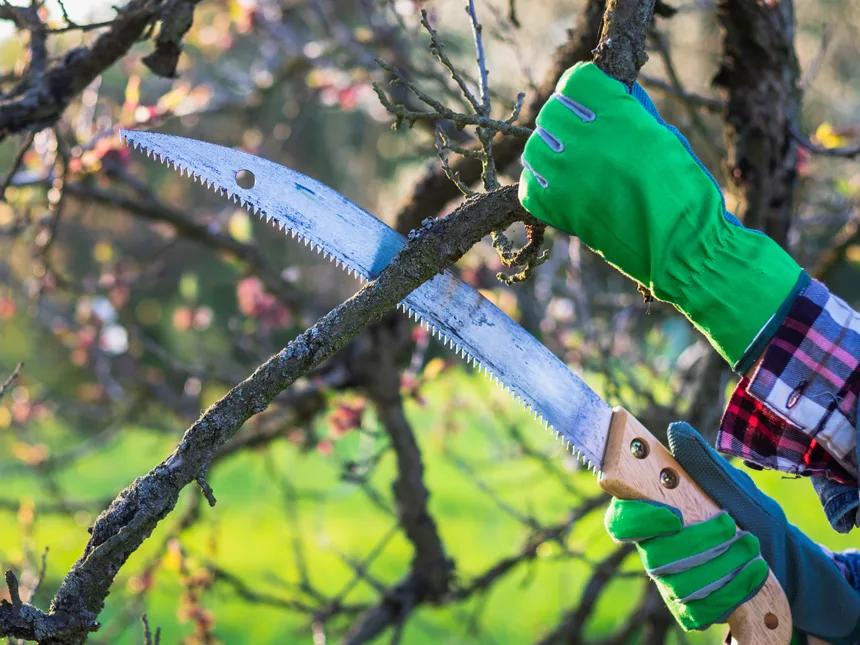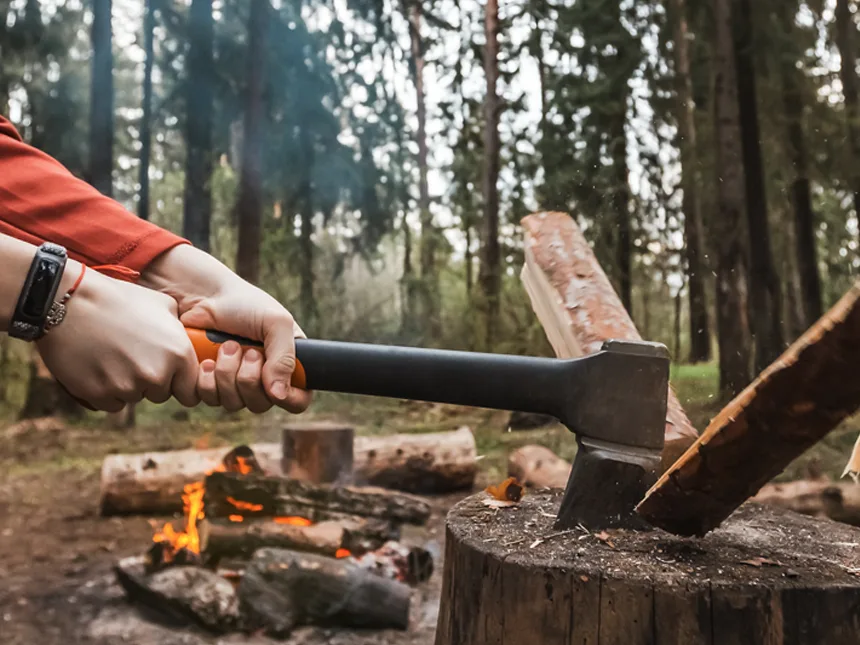The 4 Best Pulaski Axes
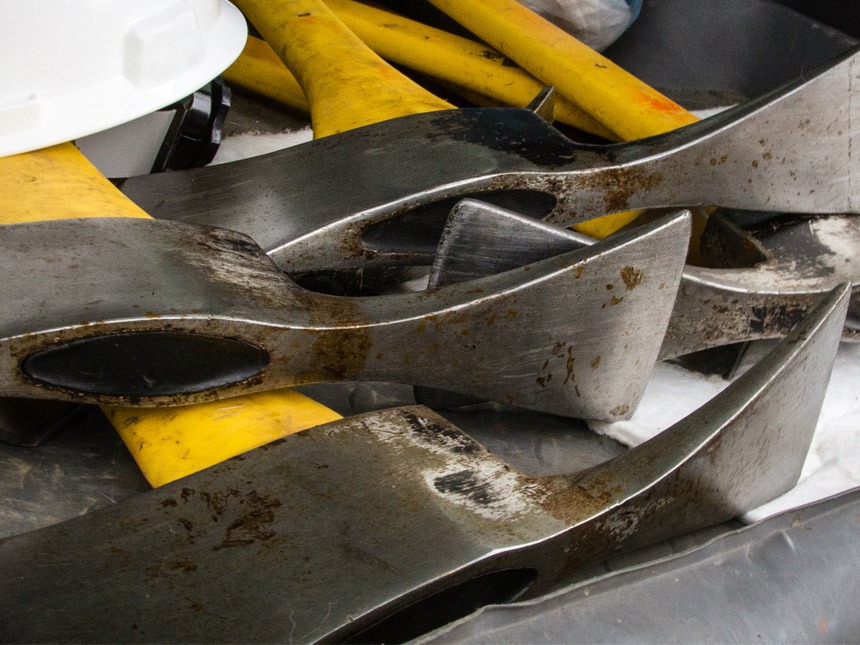
Timber Gadgets is reader-supported. We may earn a commission if you buy through the links on our site.
Though they were originally designed for fighting wildfires, people have since become aware of how useful pulaski axes are for other purposes, such as landscaping and forestry.
As such, they’re more commonly available than in the past and even include more modern variants that feature non-traditional materials.
The best pulaski axe is effective, durable, and performs the task of chopping and grubbing well.
Materials and cost are two key elements when it comes to shopping for Pulaski axes, and are the secondary areas interested customers should focus on. The overall design and usability is the first aspect to consider.
Below, we’ve provided an overview of what Pulaski axes are and why they’re so popular, how to select a good Pulaski axe, and our top picks for the best Pulaski axes currently available, including our choices for best overall and best value.
| Image | Brand | Model |
|---|---|---|
 | Prohoe Rogue | 55HXH |
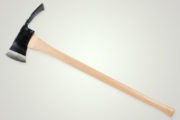 | Council Tool | Hickory Handle |
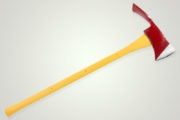 | Council Tool | Fiberglass Handle |
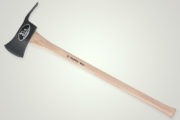 | Truper | 3.5 lb Pulaski Axe |
Table of Contents
How To Select A Good Pulaski Axe
When selecting a Pulaski axe, the most important aspects to look at are the design, materials, and cost.
Materials can often make or break a tool, and the Pulaski axe is no different. There are a limited amount of materials that can be used in this axe, but the materials themselves can have variety.
For example, handles are often made of wood, composite, or steel. The difference in the material often affects the price.
Cost is another factor that people should carefully consider. Pricier doesn’t necessarily mean better, but you’re also unlikely to find a reliable, solid Pulaski axe if you’re only looking at cheap versions.
Design
Because this tool has multiple functions, the design is important. Those looking for a good pulaski axe typically want a good axe and a good hoe. Otherwise, why not buy those two tools separately?
For that reason, a pulaski should have a good axe and a good hoe. The hoe end is the “grubbing edge,” the end that’s used for digging. The axe, of course, is meant for chopping and splitting.
A good pulaski axe will accomplish the task of chopping and digging, and it will do it well.
Materials
Traditionally, the Pulaski axe head is made of steel, while the handle is made from American Hickory. This prevents the axe from feeling top-heavy by balancing it and evenly distributing weight. It also has the dual purpose of making the axe feel more like a natural extension of your arm.
However, modern variants of this axe include composite handles. These may have a counterbalance at the bottom of the handle but overall are designed to further reduce the axe’s weight.
In addition to this, composite handles are typically stronger than wood. Having said that, composite handles usually cannot be replaced and they don’t absorb strikes as well as wood.
Price
Pulaski axes are neither the cheapest nor the most expensive types of axes. Like any tool, there is a wide range of axes available that will fit into most budgets.
The cost of a Pulaski axe may vary depending on several factors, including:
- Materials –Wood, fiberglass, and steel are common. But it’s the quality of these materials that will drive price, rather than the materials themselves.
- Construction – The way the axe is put together to form a final product, such as the bit hardness and how the head is joined with the handle.
- Craftsmanship – This involves the level of detail that goes into the axe’s construction. Premium quality versions will be more expensive than basic, “bare-bones” variants.
- Accreditation – There are certain specifications that true Pulaski axes must meet so that they can be used to fight wildfires, which drives the cost up.
Generally, Pulaski axes can cost anywhere from $50 to $200, depending on the factors above.
The final price may also be influenced by the specific company that produced it, as name brands are always more expensive than generic brands.
The Best Pulaski Axe Reviews
I’ve reviewed the most popular Pulaski axes on the market and compiled the list below, with a detailed review of each.
Whether you’ll be using them on the front lines of a wildfire or in the garden beds of your backyard, these tools will serve you faithfully for years to come.
Prohoe Rogue 55HXH
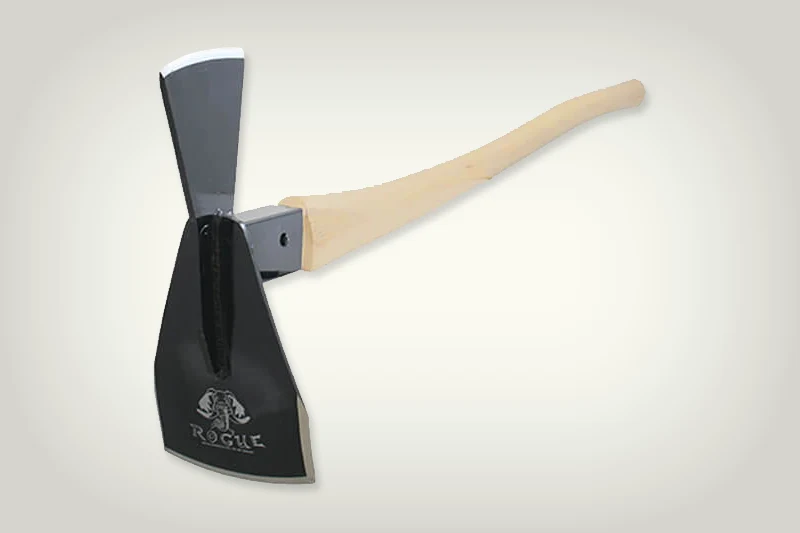
The Prohoe Rogue 55HXH is my #1 recommended pulaski axe because of its design and craftsmanship. You’ll notice a difference in appearance between this tool and the others on this page.
A lot of focus has gone into the hoe side of this tool. It has a 5.5″ grubbing edge, which makes all the difference when it comes to digging holes or trenches.
Remember, a pulaski axe not only needs to chop and split wood, but it needs to dig well too. Out of all the tools here, this one does the best at that.
The bit of the axe is 4″ and the entire head is made from hardened steel. Finally, the handle is made from hickory wood.
Council Tool Pulaski Axe With Hickory Handle
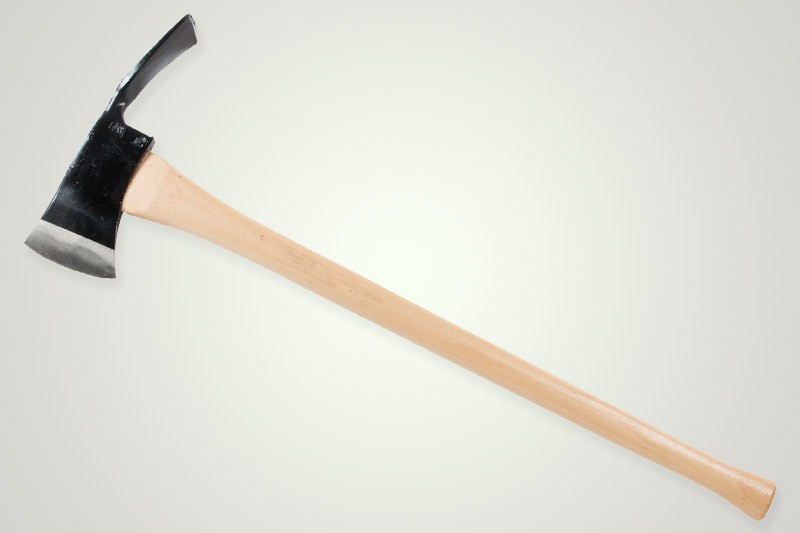
Made in the USA, this traditional Pulaski axe features a straight, solid hickory handle with a steel head.
The handle is 34 inches long and ½ inch thick, providing users with a comfortable and steady grip. The eye section is dried to below 10% moisture content, minimizing the possibility of shrinkage and loosening.
It has a hand-forged, single-bit head and mattock blade. The head is steel with a body coating of black enamel and a coat of clear lacquer on the cutting edges to prevent rusting and preserve the material. It has a bit hardness of Rc 45-60 and a tempered bit hardness of 53-58.
The head is hydraulically seated and secured with a serrated PVC wedge, improving bite and providing a strong, lightweight seal that won’t break or change size, even if moisture is present. The tapered interior detail of the eye also promotes a strong mechanical bond.
Weighing in at just 3 ¾ Ibs, it’s easy to carry, use, and store.
Council Tool produces a large array of axes, hatchets, and splitting wedges that are perfect for medium and large-scale woodworking jobs. This includes wildland firefighting, general landscaping, felling trees, and splitting logs.
This Pulaski axe is specifically produced in accordance with US Forest Service specification 5100-355E and meets the GSA spec for NSN# 5120-00-293-3467.
Council Tool Pulaski Fire Axe With Fiberglass Handle
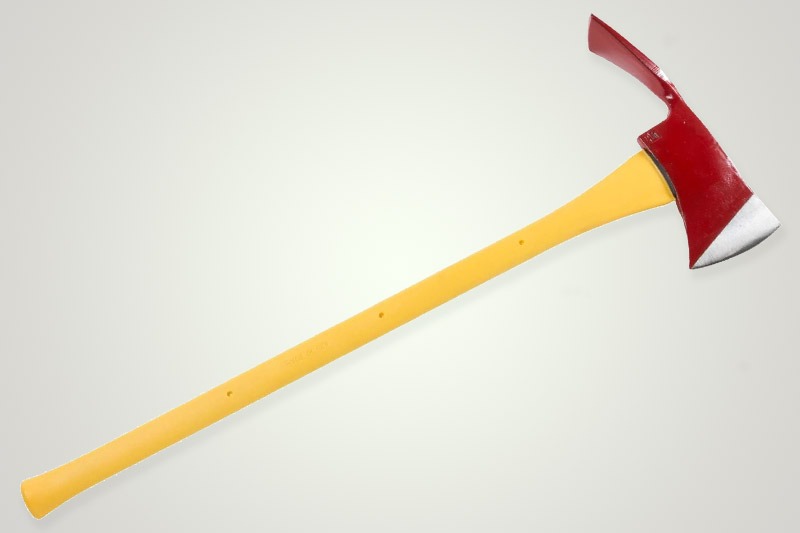
As a counterpart to the traditional Pulaski axe, this version from Council Tool features a 34-inch fiberglass handle and steel head.
The handle features a pultruded structural fiberglass core with an exterior injection molded jacket made of tough, durable engineered polymer. This creates an extremely strong, non-conductive, and non-corrosive handle.
The head is made of forged steel with a hand-sharpened, single-big edge and mattock blade. The body is coated with red enamel and the cutting edges are coated in clear lacquer to prevent rusting and maximize its lifespan. It has a bit hardness of Rc 45-60 and a tempered bit hardness of Rc 48-55.
A resilient epoxy creates a chemical and mechanical bond between the axe head and handle, while the tapered interior detail of the eye reinforces the mechanical bond. This dual-action construction forms a strong join that won’t break even in the face of wildfires.
Council Tool is an ISO 9001-2008 Certified business that’s been crafting a premier line of heavy-duty, American-made tools for over 130 years.
Truper Pulaski Axe
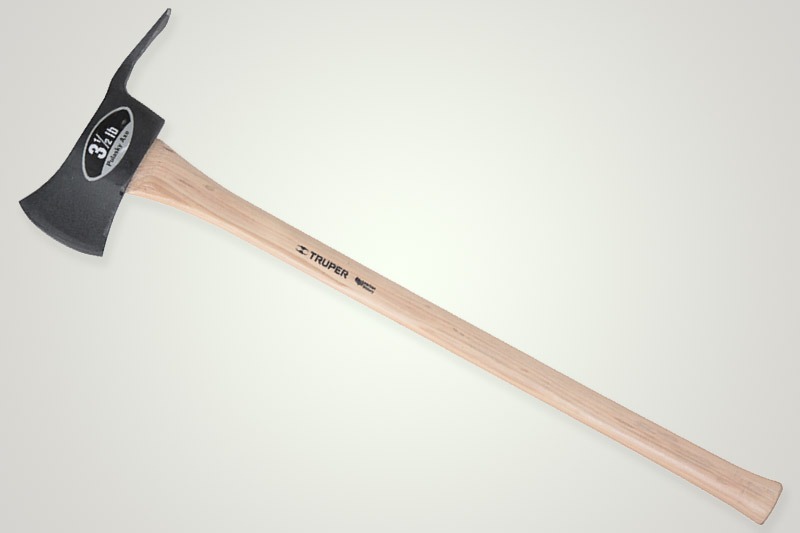
This Pulaski axe features an industry-standard, durable hickory handle for maximum strength and comfort. It’s 35 inches long and weighs in at 5.2 Ibs, including the heat-treated steel head (3.5 lb).
It also has a wood and steel wedge assembly, the preferred method for construction when it comes to Pulaski axes. This is a hallmark for Truper, which uses only the most advanced, modern, and efficient technology to guarantee products with optimum quality and value.
This axe is suitable for traditional firefighting and more modern applications, including farming, sport, recreation, and landscaping.
However, reviewers were split on how well this axe held its edge. Some reported that it needed frequent sharpening and that the bit often folded, while others claimed that their edge had stayed sharp and strong after multiple projects and tests.
This axe is also available with a fiberglass handle for those who want a more modern version.
What Is A Pulaski Axe?
A pulaski axe features an axe on one side of the head and a curved mattock blade on the other side, thus combining the bits of a traditional axe and an adze.
The unique feature of a pulaski axe is the hoe tool on the opposite side of the axe. It’s known as the grubbing edge and it’s primarily used to cut or dig trenches.
These axes were originally developed to fight wildfires and are still used for that purpose today. They’ve since become fairly common among civilians, including those involved in camping, forestry, landscaping, and more.
You can use a Pulaski axe for a wide variety of purposes, including:
- Constructing firebreaks
- Chopping wood and branches
- Scraping bark
- Cutting roots
- Clearing ground and brush
- Felling small trees and saplings
- Splitting firewood
- Digging ditches or holes
- Breaking up soil or sod
The unique design of the head means that the Pulaski axe is both versatile and effective, making it a critical multipurpose tool for both firefighters and regular citizens alike.
More About the Pulaski Axe
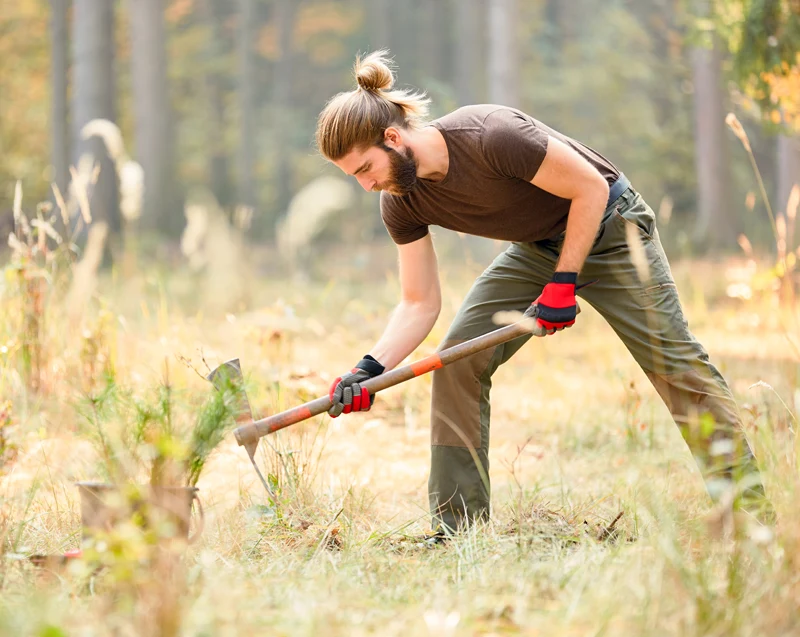
Variants of the Pulaski axe have been around since the Middle Ages. Most notable are the dolabra from ancient Italy and a double-bit axe developed by the Collins Tool Company in the 1870s for their work planting trees in the Alps.
But the version of the Pulaski axe as we know it today is credited to the man it’s named after Ed Pulaski, an assistant park ranger with the U.S. Forest Service who also served as a volunteer firefighter.
Though he was already aware of the dangers wildfires posed, the need for more effective field tools became personal after the Great Fire of 1910.
This wildfire burned through three million acres across Idaho and Montana in just two days, killing 87 people (78 of whom were firefighters) and earning its place as the largest wildfire in U.S. history.
While supervising work in a nearby area, Pulaski and his crew were caught in the fire. He corralled his 45-man crew into an abandoned prospector’s mine to try and save them. Despite his efforts, five men died and Pulaski suffered from permanent lung and eye damage.
By the next year, Pulaski had crafted a working model of the axe that would later be named after him. The Forest Service began contracting this axe for commercial use in 1920 and it became a national standard in the 1930s.
TLDR; What’s the Best Pulaski Axe?
The Pulaski axe is a multi-purpose tool that performs phenomenally in terms of fighting wildfires, which is no surprise— that’s what it was designed for. But it also outperforms many similar tools in other application areas, including forestry and landscaping.
There are many Pulaski axes currently available, including both traditional and more modern variants. We’ve covered both in this article and our top choices for Pulaski axes. Below, we’ve also broken down our picks for best overall and best value:
Best Overall – Prohoe Rogue 55HXH. This is easily my favorite pulaski axe. The reason I recommend this one is due to the overall design. The folks at Prohoe put a lot of work into designing a truly amazing tool.
The hoe end, or “grubbing edge,” is the most efficient at digging holes and moving dirt. It’s especially useful for cutting through roots and clearing brush.
You won’t be disappointed with the Prohoe Rogue 55HXH.
Budget Option – Pulaski Axe from Truper. Despite some contention about its blade and how well the edge holds up to projects of varying difficulty, this axe is undoubtedly popular.
With the majority of reviews being positive and this axe snagging an impressive rating, we can safely say that this axe remains a favorite amongst users.
This is backed by its premium construction, which includes a solid hickory handle and heat-treated steel head, wood and steel wedge assembly, and impressively light 5.2 Ib weight.
The Truper Pulaski axe with a hickory handle and heat-treated steel blade offers the best value for money. Users receive a reliable tool that works well, and also fits into most budgets.
So if you’re looking for a great Pulaski axe that will cut through your projects without breaking the bank, this is a perfect choice.

